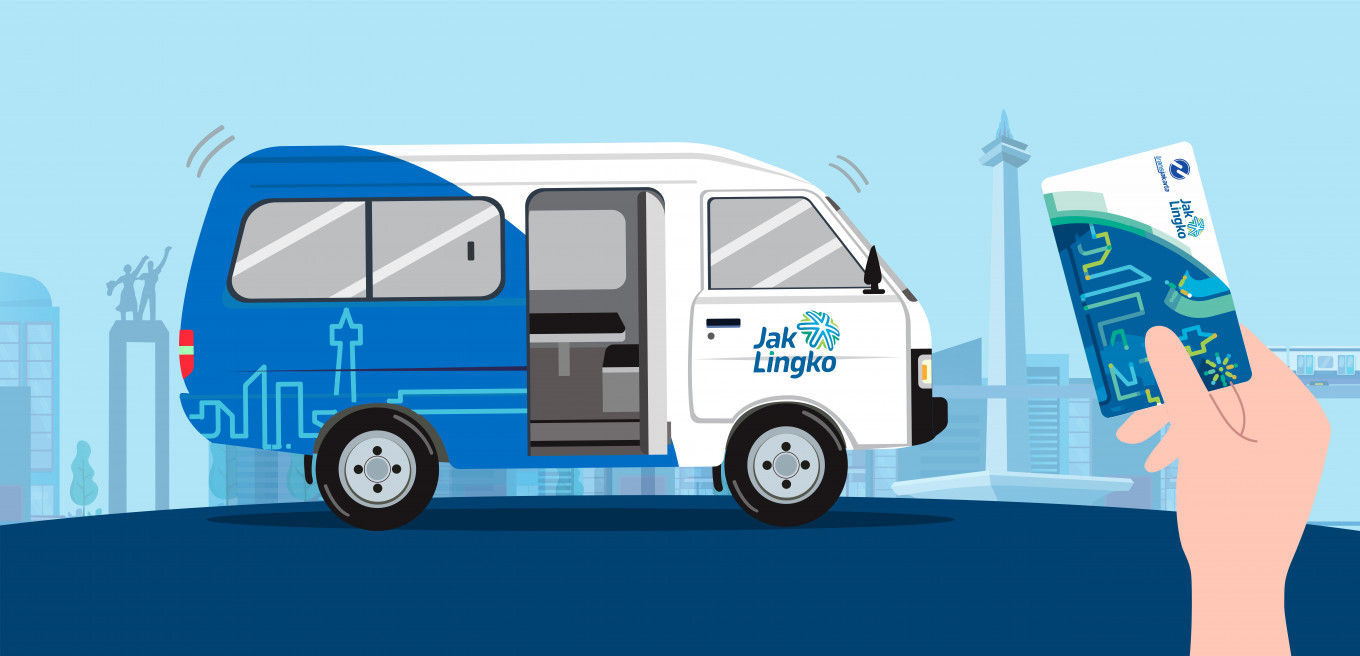Popular Reads
Top Results
Can't find what you're looking for?
View all search resultsPopular Reads
Top Results
Can't find what you're looking for?
View all search results
- Jakarta
- Sun, November 12, 2023
Change text size
Gift Premium Articles
to Anyone
Work It Right is a weekly column that provides practical and insightful advice on the complexities of urban transportation.
Who would’ve imagined that their childhood public transport nightmares circa pre-TransJakarta, known as angkot (public minivan), would come back as the transportation mainstay for Jakartans in 2023?
As a Jakartan who used to ride angkot, a portmanteau for angkutan kota meaning city transportation, from elementary until high school, I never imagined I’d be using it again as my primary mode of transportation for work!
I walk around 200 meters from my house to the nearest bus stop, wait less than 10 to 15 minutes for an angkot to arrive, tap my electronic card on the automatic fare collection machine for no charge, i.e. a free right. I ride the angkot to the Lebak Bulus transit hub to continue my trip by the Jakarta MRT or TransJakarta bus rapid transit (BRT) to the city center.
Unlike the angkot system of the past, this type of angkot stops only at bus stops. The fleet is equipped with electronic card readers and CCTV cameras. It also has a customer service number and social media accounts, in case a passenger needs to report an incident or give feedback on the service.
There was one time when I had to open my laptop for an urgent work matter in an angkot, something I wouldn’t have dared to do before, and I felt safe. The angkot service is now named Mikrotrans, though people still commonly refer to it as JakLingko, which is actually the brand name of Jakarta’s integrated transit system.
The passengers on my Mikrotrans route are diverse and range from office workers, elderly people going to a hospital for a health check, mothers taking their children to school and to students. Indeed, my Mikrotrans route stops at various public facilities such as hospitals, schools and major transit stations.
According to an ITDP survey in 2021, 66.77 percent of Mikrotrans passengers were female, including children and the elderly. This means the Mikrotrans service is a transport mainstay for vulnerable groups.
Apart from the fact that the Mikrotrans service is still free, its routes also cover small streets typical of many cities in the country, giving an added advantage to the service, making it the only public transport that can compete with on-demand motorcycle taxis (ojol).
The return of angkot as the mainstay of urban transport in Jakarta did not happen overnight.
In January 2018, TransJakarta began integrating its services with existing paratransit operators under an integrated transit scheme called Ok-Otrip, now JakLingko, incorporating a universal paratransit ticketing system into the TransJakarta network. The pilot scheme convened regional leaders, paratransit operators and the Jakarta administration and included discussions, business studies and route trials to deliver state-of-the-art cooperation and forward-thinking from critical stakeholders.
Those paratransit operators signed a multiyear contract with TransJakarta, committing the new Mikrotrans service to the same standards as TransJakarta. To date, the Mikrotrans service operates 96 routes in Jakarta.
At the end of 2019, Mikrotrans contributed 20 to 25 percent of TransJakarta passengers at a daily capacity of around 250,000 passengers, more than the number of Jakarta MRT and LRT passengers combined.
The exciting thing about angkot is that every region in the country has it.
These minivans, which measure between 4 to 5 meters in length and can accommodate 12 to 14 people, goes by many names: mikrolet in Jakarta, lyn in Surabaya and Malang, sudako in Medan and “taxi” in Bengkulu and Samarinda.
During the Japanese occupation, angkot was designed as passenger transport. However, a lack of intervention from local and state administrations led to cooperatives or individuals owning angkot. This made it difficult to manage, with ageing vehicles in a poor condition and with high fuel consumption rates, lack of adherence to designated routes, low service reliability, poor passenger safety, operational sustainability issues, nonintegrated public transport fare and lack of supporting infrastructure.
This is unfortunate, because angkot has enormous potential to become a reliable public transport service, especially amid the narrowing typology of the country’s roads.
Mikrotrans is an example of the government’s presence through improving the quality of angkot services so everyone can enjoy them. This can be done by integrating the angkot system in its mass transit plans so it has an established potential demand, and to minimize conflicts and social impact with existing operators.
The government must also invest the necessary resources to assist angkot operators and owners in improving their capacities, including management, fleet maintenance and financial capacity.
Other cities outside Jakarta can replicate the Mikrotrans service to offer inclusive mobility options for the people.
-- Have a question about urban transportation? Email wir@thejakartapost.com with your name and current location (anonymous submissions will also be considered). Please note that The Jakarta Post reserves the right to edit your letters for publication.
***
The writer is a senior communications and partnership manager at the Institute for Transportation and Development Policy (ITDP).
Have a question about urban transportation? Send it to wir@thejakartapost.com with your name and current location (anonymous submissions will also be considered). Please note that The Jakarta Post reserves the right to edit your letters for publication.









